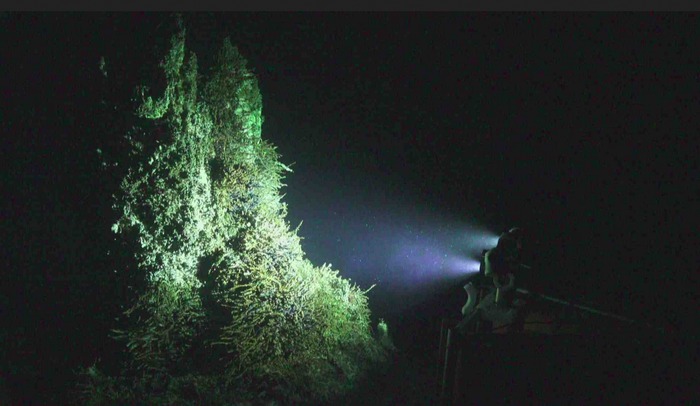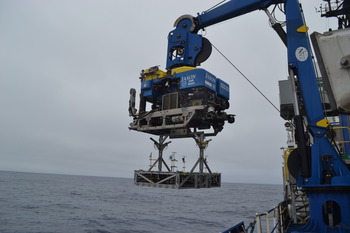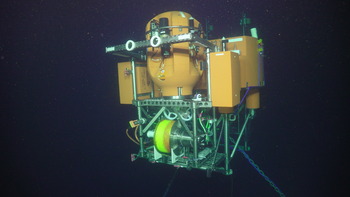The UW Regional Cabled Array team from the School of Oceanography and the Applied Physics Laboratory will once again have an exciting summer in the Northeast Pacific maintaining the National Science Foundations’ Regional Cabled Observatory. This summer’s 44-day expedition is especially exciting. We will be adding novel sensors that allow a global audience to watch live the daily deformation and seismic activity at the largest underwater volcano off our coast – Axial Seamount that erupted in 2015 and is poised to do so again. In addition we will be adding new instruments, including a 4K camera, that focus on a highly dynamic methane seep site off Newport Oregon called Southern Hydrate Ridge where explosions of bubbles issue from the seafloor daily.
The cruise will use the remotely operated vehicle (ROV) Jason onboard the global class research ship the R/V Atlantis operated by Woods Hole Oceanographic Institution. Excitement is building as our equipment is fully tested, safely packed away, and will soon be on its way to Newport where we will begin mobilizing the ship in late May. Fifteen US and international undergraduate students will join us on this expedition as part of the UW experiential at-sea VISIONS program, working side-by-side scientists, engineers, and the ship and ROV teams.
This expedition is highly complex with a diverse array of >100 instruments to be recovered, installed, and tested. We will also turn instrumented science platforms on the most technologically-advanced moorings in the oceans with science pods that travel 600 ft up into the water column daily, stream data from 18 instruments to shore in real-time every day. The R/V Atlantis will be “packed to the gills” on each of the four legs that make up this expedition, carrying everything from state-of-the-art mooring components to sharpies.
You will be able to watch our underwater operations live through streaming video as the ROV Jason works 1) >300 miles off shore and 5000 ft down at the summit of Axial Seamount, hosting deep-sea 350°C hot spring supporting some of the most bizarre creatures on Earth; 2) offshore Newport, Oregon to depths of ~250 ft to 10,000 ft in some of the most biologically productive waters in the oceans; and 3) sedimented sites on the Cascadia margin where methane-rich plumes jet from the seafloor. Here, the methane seeps support dense bacterial mats and large clams that thrive in the absence of sunlight on gases migrating through the seafloor. Here, a 4K camera funded by the University of Bremen will allow real time imaging of the methane plumes and seafloor life to document this incredibly dynamic environment marked by large explosion pits and collapse basins. This is the second year of this international collaboration that expands the capability of the Regional Cabled Array and provides new imagery of these dynamic systems to all users.
An enhanced, high-bandwidth satellite connection from the R/V Atlantis will allow you to experience our deep-sea operations through daily live video streams. It will also allow onboard engineers and scientists to see data for the first time as new instruments are connected to the seafloor submarine fiber optic cables that bring the global Internet into the oceans.
During the cruise, engineers from the Applied Physics Lab and scientists from the School of Oceanography will man the Regional Cabled Array Operations Center at the UW where they will communicate directly with the instruments as they are installed, turn power on an off, and command and control instruments from hundreds of miles away and far offshore (including a resident cabled high definition camera that streams video live from Axial Seamount throughout the year). All total, the system hosts > 140 instruments that stream data at the speed of light in real-time to shore 24/7, where they are stored and visualized through the OOI Cyberinfrastructure system at Rutgers University.
As always, it will be great to be away from the dock, smell the salt air again, and work beneath the waves on some of the most advanced technology in the oceans. For many students, these expeditions have changed their lives. We hope that you will follow along on our journey working in some of the most challenging environments on Earth, and make new discoveries.




